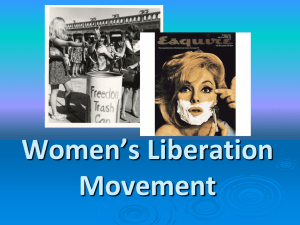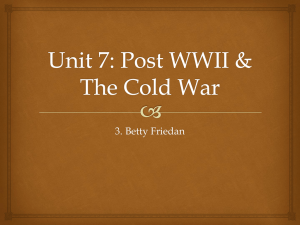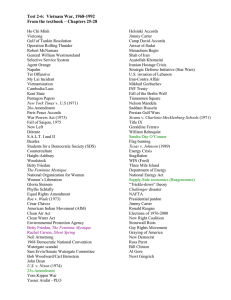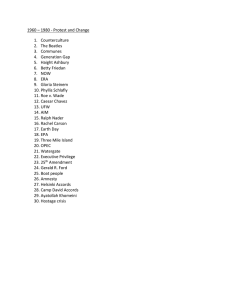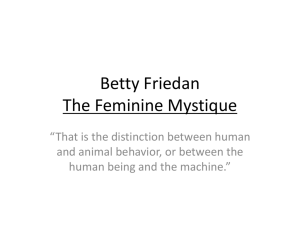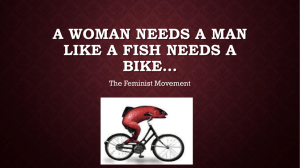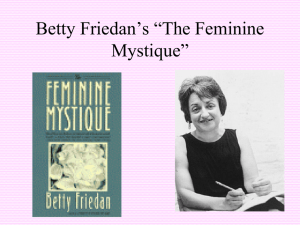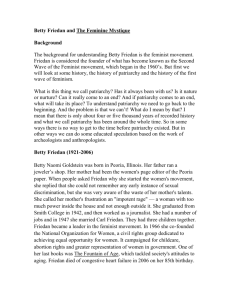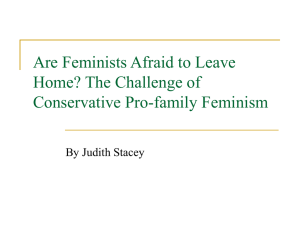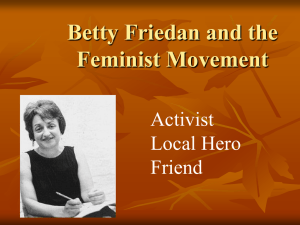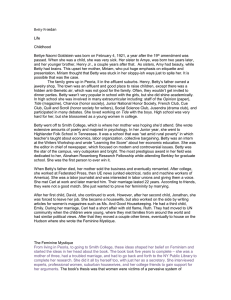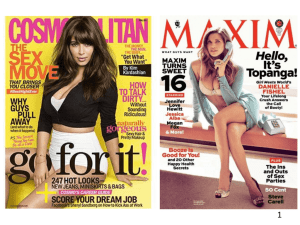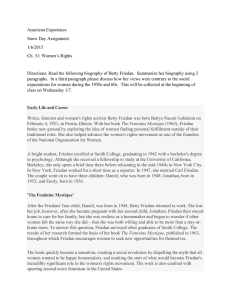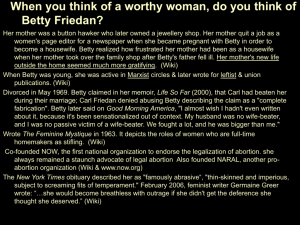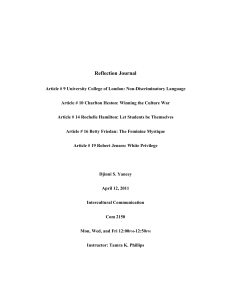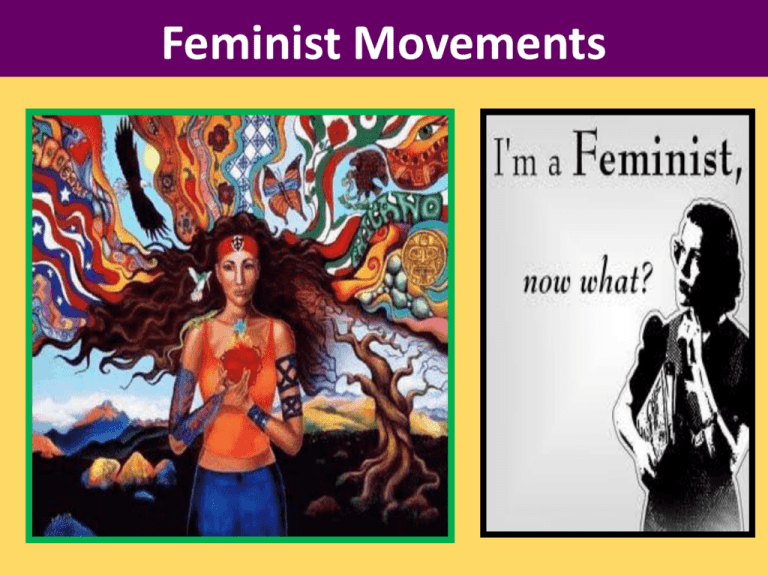
Feminist Movements
Betty Friedan’s The Feminine Mystique, 1963
• Inspired white, middle
class, suburban housewives
• Friedan’s solution to “The
Problem with No Name” =
Education & Employment
• Used surveys of women
from high school – 40s
Causes of 1960s Feminist Movement
• Betty Friedan’s The Feminine Mystique, 1963
• Civil Rights Era & Anti-Vietnam War Protests
• Large population of educated women in U.S.
• The Sexual Revolution
The Sexual Revolution
• 1960s = New emphasis on
casual dating, selffulfillment, & open talk
about sex in society
• Rise in pre-marital sex,
couples living together out
of wedlock
• 1960 = F.D.A. approved the
first Birth Control Pill
• Religious groups issued
statements against the Pill
(NOW) National Organization for Women
• Formed by 28 women in 1966
• Members were professional,
politicized women & unhappy
former housewives
• 1967 = 1,000 members vs. 1971 =
15,000 members
• Betty Friedan was first president
• The major organization for
women in the 1960s feminist
movement
Consciousness Raising
• Recruitment tactic of
younger feminists
• Transformed a woman’s
perception of herself and
society
• Sought to make “private”
issues public: rape, domestic
abuse, child abuse, antipornography
Roe v. Wade (1973)
• Supreme Court upheld a
woman’s constitutional
right to an abortion
• 1972 = Over 2,500 illegal
abortions performed per
day
• Maternal deaths from
abortions declined
Pervasiveness of Sexism
• Sexism exists at all levels
of society: in family, law,
economy, religion, media
• Ending sexism means
changing attitudes as well
as laws
• Feminist groups debated
HOW to end oppression
of women
What About Other Feminists?
• Moderate = Betty
Friedan, fans of The
Feminine Mystique,
NOW members
• Working-class, lesbian,
and women of color
left out of 1960s
feminist movement
• 1970s = Black Feminist movement began with
women who were left out of both the Civil Rights
Movement and Black Panthers
• Believed racism & sexism needed to be eradicated
together
Combahee River Collective
(ERA) Equal Rights Amendment
• 1st Proposed in 1923 by
suffragist Alice Paul &
the National Women’s
Party
• Constitutional
Amendment would
have guaranteed equal
rights for women and
men
• Passed by Congress in 1972
• Expired in 1982 with only 35 out
of 38 states required to approve
• Opponents feared it would
eliminate women’s protection
laws (that were based upon
women’s inequality)
Title 9
• A step to bring equity to
women’s sports on July
1, 1972
• “Intense forms of
physical and psychic
conflict…tend to destroy
girls’ physical and
psychic charm and
adaptability for
motherhood”
--“Olympics for
Girls?” 1929
All-American Girls Professional Baseball League
Billie Jean King
Althea Gibson

